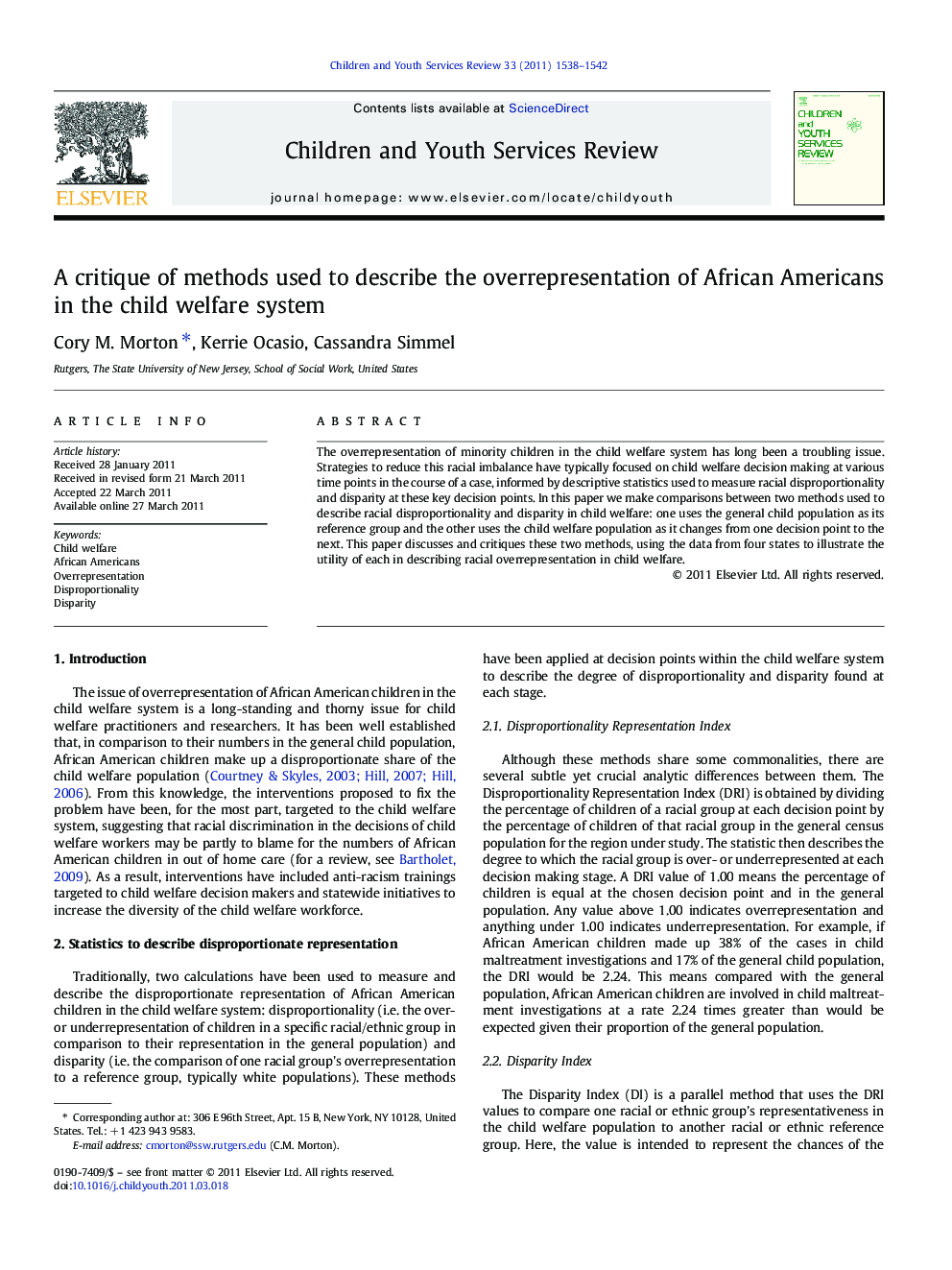| Article ID | Journal | Published Year | Pages | File Type |
|---|---|---|---|---|
| 346138 | Children and Youth Services Review | 2011 | 5 Pages |
The overrepresentation of minority children in the child welfare system has long been a troubling issue. Strategies to reduce this racial imbalance have typically focused on child welfare decision making at various time points in the course of a case, informed by descriptive statistics used to measure racial disproportionality and disparity at these key decision points. In this paper we make comparisons between two methods used to describe racial disproportionality and disparity in child welfare: one uses the general child population as its reference group and the other uses the child welfare population as it changes from one decision point to the next. This paper discusses and critiques these two methods, using the data from four states to illustrate the utility of each in describing racial overrepresentation in child welfare.
Research highlights► This paper makes comparisons between two methods used to describe racial disproportionality and disparity in child welfare. ► The utility of using the general child population as the reference point for numerical descriptions of disproportionality and disparity is contrasted with using the prior child welfare decision-making point as the reference. ► The strength in this analysis lies in addressing the biases inherent in using the general child population as the reference point for describing decision making within the child welfare system.
